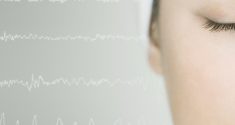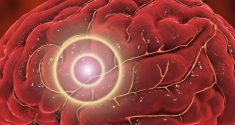Should I do sport or would I rather go to a café and enjoy a delicious strawberry milkshake? What exactly happens in our brain when we make this decision has been a mystery to science until now, but researchers at ETH Zurich have found the solution. They have deciphered which brain substance and which nerve cells mediate this decision: the neurotransmitter orexin and the neurons that produce it.
These neuroscientific principles are relevant because many people do not get enough exercise. Most of us have probably decided at one time or another to skip exercise in favor of one of the many alternative temptations of daily life. According to the World Health Organization, 80 percent of adolescents and 27 percent of adults do not get enough exercise. And obesity is increasing at an alarming rate not only among adults, but also among children and adolescents.
Orexin Plays a Key Role in Whether Food is Preferred Over Exercise
Despite these statistics, many people manage to resist the ever-present temptations and get enough exercise. Researchers led by Denis Burdakov, Professor of Neuroscience at ETH Zurich, wanted to know what it is in our brain that helps us make these decisions. In their experiments with mice, the researchers were able to show that orexin plays a key role in this process. It is one of over a hundred neurotransmitters that are active in the brain. Other neurotransmitters, such as serotonin and dopamine, were discovered a long time ago and their role has largely been deciphered. The situation is different with orexin: researchers discovered it relatively late, around 25 years ago, and are now gradually clarifying its functions. Burdakov is one of the scientists who has been researching orexin.
 According to the researchers, dopamine is a popular explanation in neuroscience as to why we choose certain things and avoid others. This messenger substance in the brain is crucial for our general motivation. However, our current knowledge of dopamine does not readily explain why we choose to exercise rather than eat. Our brain releases dopamine both when we eat and when we exercise, but this does not explain why we choose one over the other.
According to the researchers, dopamine is a popular explanation in neuroscience as to why we choose certain things and avoid others. This messenger substance in the brain is crucial for our general motivation. However, our current knowledge of dopamine does not readily explain why we choose to exercise rather than eat. Our brain releases dopamine both when we eat and when we exercise, but this does not explain why we choose one over the other.
To find out, the researchers developed an ingenious behavioral experiment with mice that were able to choose freely from eight different options in ten-minute trials. These included a wheel on which they could run and a “milkshake bar” where they could enjoy a normal strawberry-flavored milkshake. In their experiment, the scientists compared different groups of mice: a group with normal mice and a group in which the orexin system of the mice was blocked, either with a drug or by genetically modifying their cells. The mice with an intact orexin system spent twice as much time on the running wheel and half as much time at the milkshake bar as the mice whose orexin system was blocked. Interestingly, however, the behavior of the two groups did not differ in experiments in which the scientists only offered the mice either the running wheel or the milkshake. This means that the main role of the orexin system is not to control how much the mice exercise or how much they eat, but rather, according to the researchers, it seems to play a central role in deciding between one and the other when both options are available. Without orexin, the decision was clearly in favor of the milkshake, and the mice forwent exercise in favor of food.
What This Means for Humans
The ETH researchers assume that orexin could also be responsible for this decision in humans; the brain functions involved are known to be practically the same in both species. According to Daria Peleg-Raibstein, group leader at ETH Zurich, who led the study together with Denis Burdakov, the next step will be to verify these results in humans. This could involve examining patients who have a restricted orexin system for genetic reasons – this is the case in around one in two thousand people. These people suffer from narcolepsy (a sleep disorder). Another possibility would be to observe people who receive a drug that blocks orexin. Such drugs are approved for patients with insomnia.
By understanding how the brain mediates between food intake and physical activity, the researchers say more effective strategies can be developed to combat the global obesity epidemic and associated metabolic disorders. In particular, interventions could be developed to help overcome barriers to exercise in healthy people and those with limited physical activity. However, Burdakov points out that these are important questions for scientists involved in human clinical research. He and his group are dedicated to basic neuroscience research. Next, he wants to find out how the orexin neurons interact with the rest of the brain when making decisions like the one between exercise and snacking.







